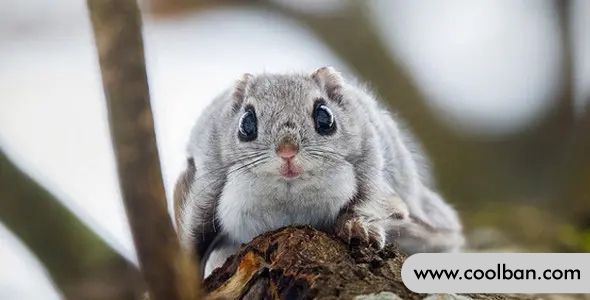How to feed Japanese flying squirrels?
Japanese flying squirrels are native to Japan and are mainly distributed in Hokkaido, Shikoku and Kyushu in Japan. The weight of an adult Japanese flying squirrel is about 100-150g, the ideal body length should be about 15cm, and the tail length is close to the body length of about 12cm. It looks so cute. Big piercing eyes are suitable for nocturnal activities and are the favorite food of many nocturnal animals.
The Japanese flying squirrel's hair is brownish-gray or purple-black in summer, with a few brown hairs, and pale yellow in winter. When gliding, the limbs are extended and the tail is straight and slightly tilted, and the epidermis is controlled with the help of the palmar carpi flexors and extensors of the forelimbs. When landing, the head is raised, the body is vertical, the front feet are used to grasp the torso, and the higher the slope, the longer the glide distance.
The Japanese flying squirrel likes to inhabit the wild alpine forests and is a typical nocturnal animal. If it is raised at home, it is best to put it indoors or outdoors with a roof in hot summer. If it is too high, it is best to spray water to cool it down. No protective measures are required in winter.

Feeding knowledge of Japanese flying squirrels
Japanese flying squirrels are very lively, especially like to climb trees, the activity space is more three-dimensional, try to use a wide and high cage. Since Japanese flying squirrels are used to nesting in trees, the nest box should be installed high in the cage. The nest box can be replaced with a nest box with a higher entrance for the birds. Japanese flying squirrels move very fast, so be careful when opening and closing doors to avoid escaping. In case of escape, if you grab it suddenly and forcefully, be sure to avoid being bitten by the Japanese flying squirrel.
The house where Japanese flying squirrels are raised generally requires a southeast direction, warm in winter and cool in summer, and a place with a certain amount of light, which is conducive to animal health. Animal rooms and cages should conform to the living habits of animals. The house for keeping Japanese flying squirrels can be made of iron wire or wooden boards, and the area should be appropriately larger. When raising in a single cage, the size of the outer cage can be 60X25X45 cm, or a double-layer cage of 55X45X45 cm can be used as a mating place for feeding, drinking, exercising and breeding.

The periphery and top of the outer cage can be woven with wire with a mesh size of 4-3.5 cm, and the bottom of the cage can be woven with thicker wire; the sides and back can also be replaced with glass or iron, and the small door is convenient for animals. Access or clean up, or throw in food and water. In addition to the cage, there should also be a nest box for its habitat, rest and calving; the nest box can be made of wooden nails with a thickness of 1.5~2.0 cm, and the length, width and height are 30X25X25cm or 45X35X45cm respectively. Outer cages can be installed with the nest box; they can also be placed separately, allowing the Japanese flying squirrel to come and go freely.
Japanese flying squirrels are omnivores and like to eat plants. Consider feeding some fruit and squirrel food. Occasionally feed some animal food. Food can be fed pine nuts, hazelnuts, melon seeds, sunflowers, pears, apples, etc. Provide as many foods as possible for them to choose from, depending on the season and different regions. Food can be placed in several places to prevent them from competing. Dry material can be Add every 2 to 3 days. There should always be clean water in the basin.

Regarding the main points of Japanese flying squirrel breeding technology, choose healthy ones for breeding when purchasing, and the ratio of male and female can be 3~4:1. It is especially necessary to single out weak males, who may be attacked by other males. During the breeding season, you can give some animal foods, such as boiled eggs, bread, etc., to see if they like it or not. In addition, put some clean dead leaves, broken hemp, branches, etc. in the circle for them to nest or nest. Cubs born half a year old should be kept separately to avoid excessive density.
